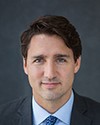Thank you, Mr. Chair.
I thank the committee for allowing me to appear before you today and for your efforts to enhance and improve the integrity of Canada's immigration system.
My name is Todd Shean. I'm the assistant commissioner of federal and international operations for the RCMP.
I will focus my brief remarks on the RCMP's role in helping to protect the integrity of Canada's immigration system, including supporting Citizenship and Immigration Canada and the Canada Border Services Agency in determining the admissibility of foreign nationals who wish to come to Canada under the provisions of the Immigration and Refugee Protection Act.
As Canada's national police force, the RCMP works closely with Citizenship and Immigration Canada, the Canadian Security Intelligence Service, the Canada Border Services Agency, as well as domestic and international partners, to secure Canada's borders and to protect the integrity of our immigration system and maintain public safety.
One of the ways this is accomplished is through the investigation of immigration offences. This is a shared responsibility between the RCMP and the CBSA. The CBSA is the lead agency responsible for investigating most offences under the Immigration and Refugee Protection Act, including general offences, misrepresentation, counselling misrepresentation, smuggling, and document fraud.
The RCMP has a responsibility to combat serious and organized crime by developing and implementing strategies to disrupt organized crime threats.
As part of the continuum of investigations into immigration-related offences, the RCMP has primary responsibility for the investigation of offences under the Immigration and Refugee Protection Act involving criminal organizations or national security, such as organized human smuggling, trafficking in persons offences, and those investigations requiring the employment of special police techniques.
The RCMP is also responsible for investigation of Citizenship Act offences and Criminal Code offences, such as fraud, forgery, uttering forged documents, trafficking in persons, and conspiracy.
However, the investigation of criminal offences is only one of the ways the RCMP is involved in protecting the integrity of Canada's immigration system. Security screening helps prevent persons who are, or have been, involved in serious criminality, organized crime, war crimes or criminal activities related to terrorist offences, from entering or remaining in Canada. If allowed to enter or remain in Canada, those individuals threaten the integrity of the immigration system and represent a potential threat to public safety.
The RCMP is a service provider to CIC for security screening and immigration applicants across the spectrum of immigration streams. The RCMP Canadian Criminal Real Time Identification Services provides security screening in support of permanent resident, citizenship, and refugee immigration programs. Applicants are checked to see if they have a criminal record in Canada that renders them inadmissible under the provisions of the Immigration and Refugee Protection Act.
There are two kinds of screening activities undertaken by the Canadian Criminal Real Time Identification Services. One is name-based checks, where applicants' name and date of birth are compared against the Canadian criminal name index to see if they have a criminal record. The second is fingerprint analysis. In support of the name-based checks, the Canadian Criminal Real Time Identification Services also conducts fingerprint-based criminal record searches. If, after a name-based check is completed, there is a possible match to a criminal record, the individual making the application is required to submit fingerprints. The fingerprints are compared with those associated with the criminal conviction to confirm or verify the identity of the individual making application for permanent residency or citizenship.
In the fiscal year 2010–11, over 24,000 fingerprint submissions were processed in support of permanent residency applications. Of these submissions, approximately 24% hit a fingerprint record. In fiscal year 2010–11, over 19,000 fingerprint submissions were processed in support of Canadian citizenship. Of these, approximately 31% hit a fingerprint record. A hit occurs when the fingerprint or name-based check matches an existing record.
The RCMP also works with security partners to help ensure the integrity of the refugee determination system. The RCMP currently conducts fingerprint analysis for criminal records on all refugee applicants referred to them by Citizenship and Immigration Canada. In 2010, there were hits on 16.6% of refugee fingerprints. For the first 10 months of 2011, the hit rate was 18.9%.
The hits noted above include refugee applicants' fingerprints that match an existing fingerprint file during the initial or front-end screening process, as well as instances where criminal fingerprints, such as latent fingerprints found at the crime site, hit to an existing refugee file subsequent to the applicant being in Canada for a period of time.
Under the Balanced Refugee Reform Act, the RCMP receives resources to conduct a security screening pilot project in partnership with CIC and CBSA. When the Balanced Refugee Reform Act comes into force, the RCMP security intelligence background section will begin screening a percentage of refugee applicants by conducting law enforcement record checks against a number of law enforcement databases to which it has access. The value of conducting law enforcement record checks resides in the fact that this type of screening goes beyond just checking for a criminal record. To better illustrate this, the RCMP security intelligence background section conducted law enforcement record checks for Transport Canada on an existing maritime port employee whose clearance was due for renewal. While the subject had no criminal record, the law enforcement record check revealed that the port employee was an active member of an outlaw motorcycle gang.
Without this more in-depth screening, the applicant would likely have undergone the traditional security checks, commonly referred to as criminal record checks, which are very limited in scope. The subject would have come back as a “no hit” to the requester and conceivably would have received their security clearance.
In partnership with the CBSA and Citizenship and Immigration Canada, the RCMP also conducts visa vetting on select temporary resident visa applications. Visa vetting is an enhanced criminal screening process that provides feedback to CBSA and Citizenship and Immigration Canada concerning business and visitor visa applicants and their sponsors. It was originally set up to deny attempts by eastern European organized crime from coming to the greater Toronto area on visitors' visas.
The RCMP visa vetting program is managed under the immigration and passport branch at national headquarters. The RCMP receives information from CIC and CBSA on select visa applications. Investigators conduct database checks of the individuals making application and they conduct field interviews and investigations with the goal of verifying the information on the visa application.
This activity has been found to be very successful because it serves to prevent the travel to Canada of persons involved in criminality. As it specifically targets individuals associated with organized crime, visa vetting directly supports Government of Canada priorities. Currently, the program team only screens a small percentage of visa applications from three locations: Moscow, Kiev and Mexico.
The RCMP also conducts screening on applicants wishing to come to Canada through special Government of Canada public policy initiatives such as the Afghan special measures project and the Haiti humanitarian project.
In conclusion, the RCMP recognizes the importance of maintaining the integrity of Canada's immigration system. For this reason, I wish to assure the committee that the RCMP will continue to work with its partners to help protect the integrity of Canada's immigration system, both through investigational activities and also providing intelligence information related to immigration applicants so that CIC can make informed determinations on admissibility.
Thank you for the opportunity to appear before you today. Superintendent Cuillierrier and I are available to answer any questions you may have.













